
Javelina Indigenous Dining taps into oral traditions for its precolonial menu.
If you tried to order a hamburger in ancient Rome, it wouldn’t come with fries. No ketchup either: Tomatoes and potatoes wouldn’t reach European shores until the sixteenth century. Five thousand miles away in what is now called the Pacific Northwest, there’d have been no lettuce, mustard, or sesame seeds for the bun. Cows and pigs aren’t native to the Americas, so elk or bison would have to sub for an all-beef patty.
In 2025, things are a bit different: The agricultural bounties of both hemispheres are in ready supply, and sophisticated cooking methods have become incredibly convenient. Many historic recipes and traditional techniques of the precolonial world have fallen out of favor or been lost entirely; certain ingredients have even gone extinct. But two Portland area restaurateurs are running it back to the ancient foodways that shape what, and how, we eat today.
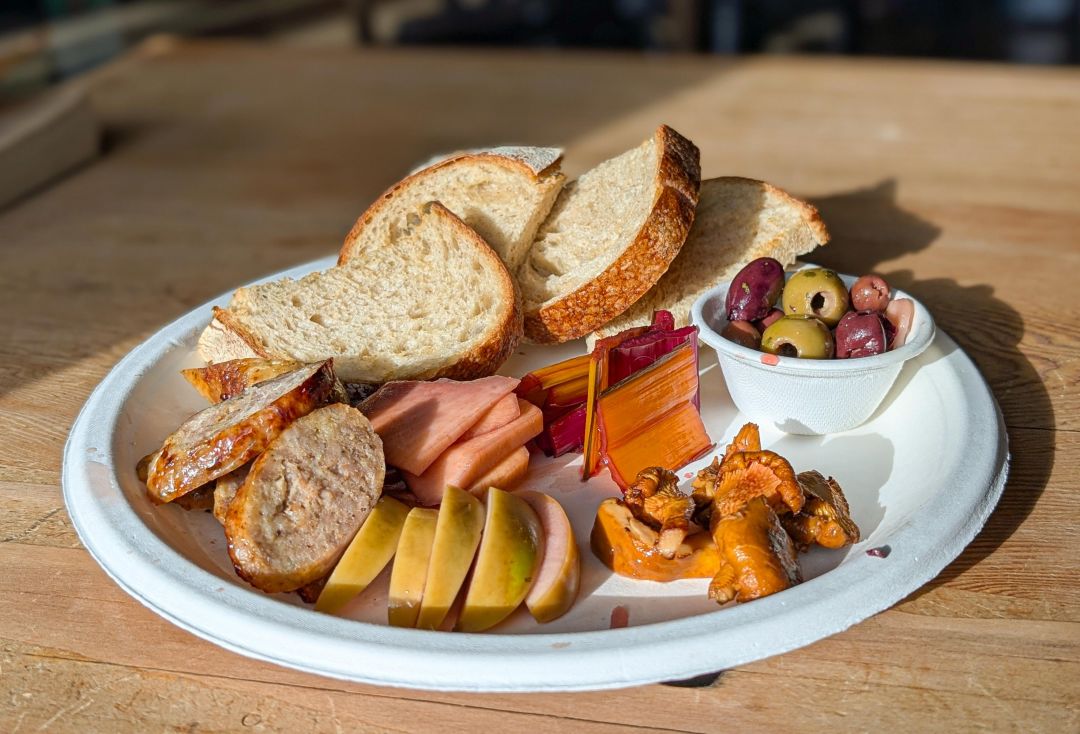
Other than the paper plates, the pop-up Salona hews closely to ancient Roman dining.
Eat as the Romans Ate
The astronomer Carl Sagan once said, “To make an apple pie from scratch, you must first invent the universe.” That’s more or less how Caraway Alexander found their way to recreating the cuisine of ancient Rome. They were cooking at an Italian restaurant and were struck by a question: What would the original Italian food look like? Before there was a nation known as Italy, before tomatoes came to Europe, before even the fork itself found popularity, there was Rome, a vast empire that stretched, at its height, from the British Isles to the Nile River. Alexander’s empire is considerably more modest: Salona, which pops up around Portland about once a month or so, specializes in their interpretations of Roman cuisine, from barley-crusted chicken wings to the fermented fish sauce the ancient world couldn’t get enough of.
Alexander discovered cooking in their 20s after realizing a political science major wasn’t in the cards. “I just paid less and less attention to school, and more and more attention to my kitchen,” they say. After dropping out of college, they ended up in a shelter, where someone suggested they look into restaurant jobs. They landed a dishwashing gig at pizzeria Oven & Shaker and fell in love with the industry. “I really appreciated that no one really minded that I was a little different.”
Alexander says that when they lock in on an idea, it’s all or nothing. Tastes have changed in the past two thousand years or so, and to produce meals from that far back has meant scouring the limited surviving records for references to food fads and what sort of kitchen tools were available to the ancient chef. Alexander says the menu at Salona is based on the works of both ancient epicureans like Apicius (the likely author of the only surviving cookbook from the Roman era) as well as modern authors’ attempts to recreate ancient cuisine, like Sally Grainger’s recent Roman Recipes for Modern Cooks, which collects contemporary interpretations of meals mentioned in Latin texts.
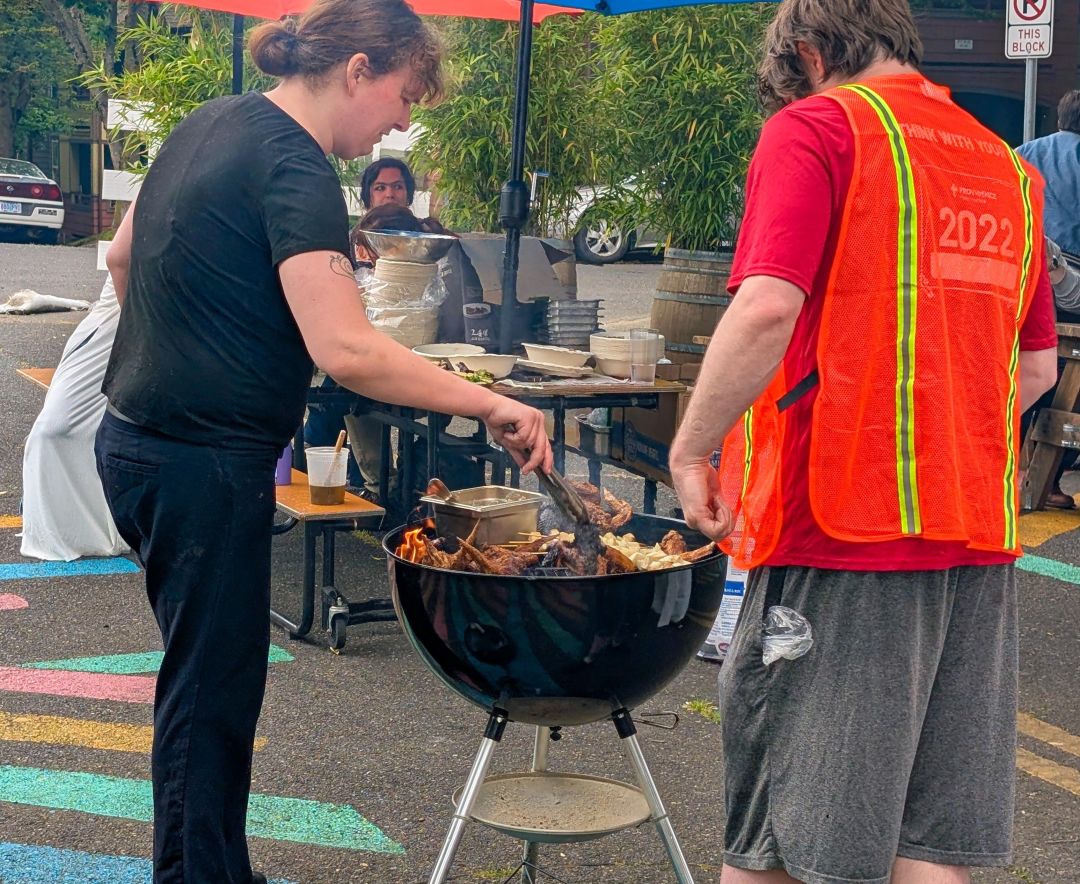
Salona founder Caraway Alexander tends the grill at a pop-up.
Feeding the Mob
The first Salona pop-up in May 2025 was an ad hoc affair: plastic folding tables and a couple of sun tents in the parking lot of the Mayfly taproom in Kenton. Alexander and their team grilled chicken wings on a battered Weber grill and carefully dropped hand-formed millet balls into a pot of bubbling oil on a cracked hot plate. But Portland’s classics nerds (and the classically curious) showed up in force, and the event sold out in two hours. “I just got completely bum-rushed,” Alexander says. “It was very chaotic.”
According to Mary Jaeger, a professor of classics and food studies at Oregon State University, the average citizen of the empire would feel quite at home among the sounds and smells of a bustling crowd and meat sizzling on charcoal grills. “We see this in places like Pompeii, right? Market stalls with little [braziers] carved out, almost like steam tables.” These precursors to the modern cart pod, called thermopolium or popina, would have been quite popular in the crowded urban centers of the ancient world. “If you lived in a city, maybe four stories up in an uninsulated flat with no ventilation and no elevator, you’re not going to be hauling firewood [to cook with] up there,” Jaeger says. Then, as now, street vendors filled the gap with simple meals that could be cooked quickly and eaten on the go. It’s tempting to think of Portland’s food cart and pop-up scene as a modern innovation dependent on car culture and propane tanks, but as long as there have been cities there have been city dwellers looking to score a quick bite on the way to somewhere else.
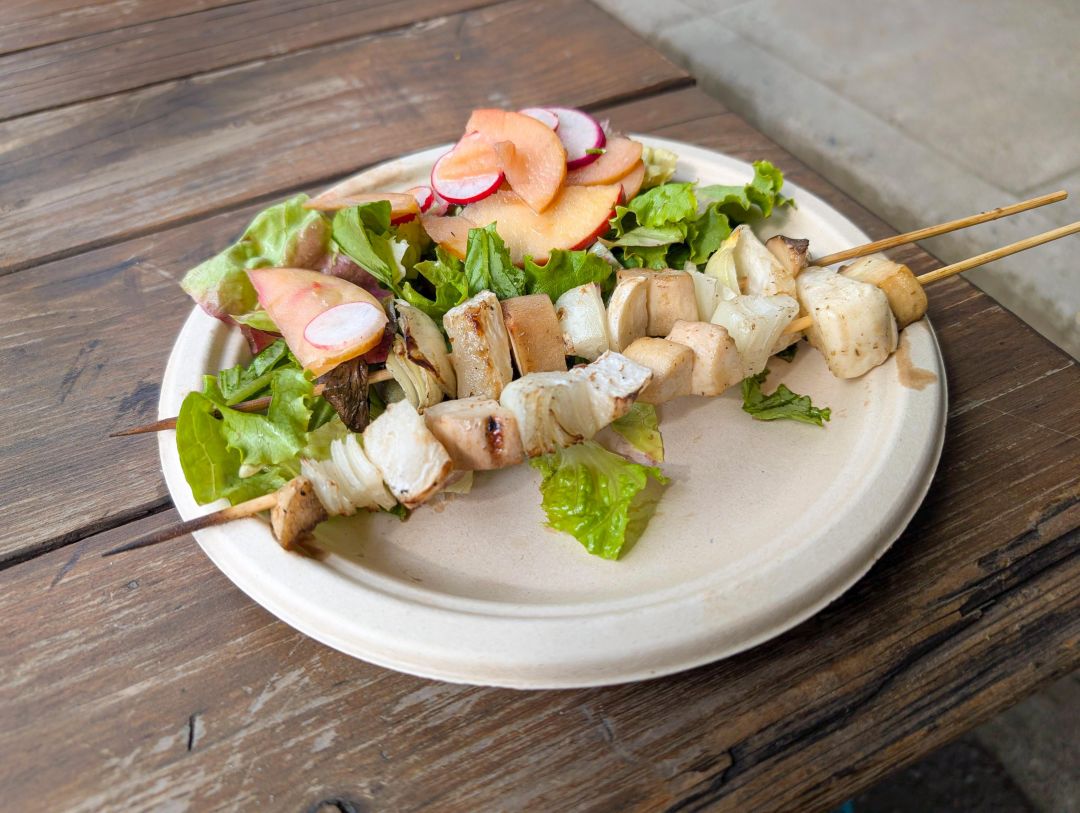
Salona pops up semimonthly around Portland.
Since the first pop-up, one recurring source of curiosity among the assembled Salona crowd relates to the fermented fish sauce the Romans called garum. What is it? What’s in it? Wasn’t it just Worcestershire sauce or something? “It’s how Romans seasoned things with salt,” says Professor Jaeger. “It was ubiquitous. They used it in sweet foods and savory.” The historical recipe is pretty straightforward: Raw fish, usually mackerel, tuna, or anchovy, goes into a pot, the pot goes out in the sun, and some months later you get a potent amber liquid, liquamen, basically distilled umami. Sophisticated garum factories have been unearthed along the Mediterranean coast, but as the industrial capacity to produce it crumbled along with the empire, the condiment fell out of favor. The component parts are simple: salt, herbs, and fish. But the ratio of ingredients was considered lost for centuries until several intact containers were discovered in 2009. In the ancient world, garum was prized alongside wine and olive oil as both a staple and a luxury, although you probably wouldn’t prize living next to a garum factory. “I’m making some at home right now. It’s on month two,” Alexander says, although at a scale that’s unlikely to fumigate the neighborhood.
Farm-to-table dining is something of a premium experience now, but in the ancient world it was often the default—despite dense urban centers and access to a vast trade network, most of Rome’s populace ate seasonally with what they could grow or forage. Professor Jaeger notes that in the centuries before pasteurization, refrigeration, and germ theory, most food didn’t travel very well and wasting it was a luxury only the very wealthy could engage in. “[The Romans] ate every part of the pig, practically,” she says. “I’m talking the uterus, I’m talking the testes.”
Alexander says they’ve kept to cuts of meat more familiar to a Portland audience (chicken wings and spareribs, mostly) but still run into the occasional complication. “I tried serving a buckwheat cake with pâté and peaches,” they say. “It was delicious, it had a little pennywort yogurt on it. But it did not sell well.” The reason, Alexander admits, might have something to do with the name: placenta cake. According to reproductive historians the name of the cake probably came first, but try telling that to a twenty-first century diner. Same goes for their collaboration with local salumist Oi! The Sausage. “I could not name my sausages botulus,” Alexander laments. The disease known as botulism was named after the Latin word for sausage, a real nightmare scenario when it comes to ancient charcuterie brand identity.
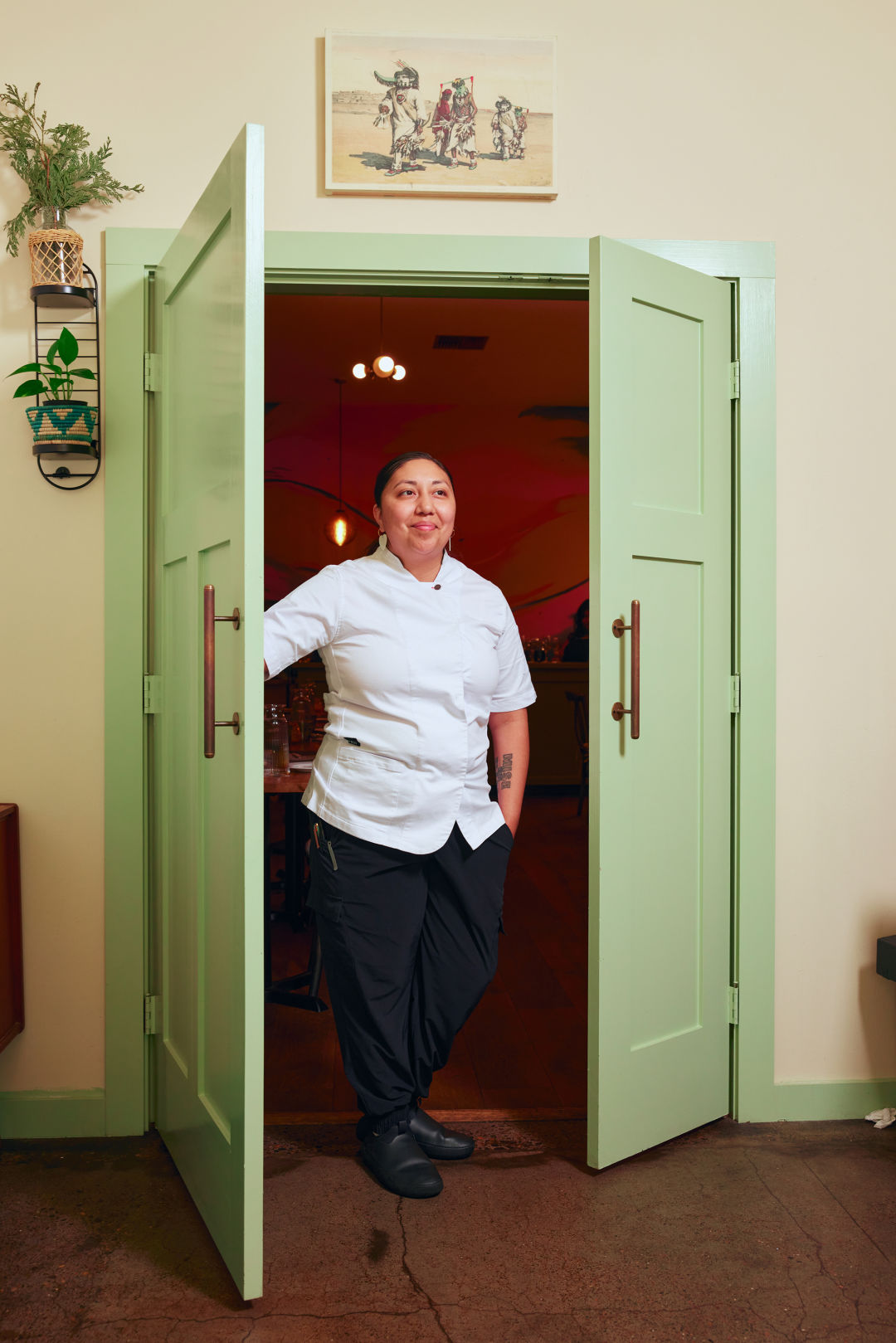
Chef Alexa Numkena-Anderson brings precolonial cuisine from all over Turtle Island to Javelina.
Dining on Turtle Island
Across town at Javelina Indigenous Dining, the menu represents a different sort of origin story. Emily Washines, an enrolled Yakama Nation tribal scholar, explains that feeding people is deeply intertwined with Indigenous creation beliefs. “Ispilyay, or Coyote, said that humans were coming, and that animals who could speak would no longer have a voice,” she says. “They would need to sacrifice themselves for our lives, to make us stronger. The first to step forward was the salmon, followed by deer and elk, and the roots and berries were last.” These ingredients feature heavily on the Javelina menu, along with other traditional protein sources in dishes like the bison chili and a rabbit- and rattlesnake-stuffed pepper. Washines says that recognizing that connection between humanity and the plants and animals we consume is an important component of Indigenous cuisine: “[We] speak for them because they can no longer speak for themselves.”
Washines is a “proud auntie” to Javelina’s head chef and cofounder, Alexa Numkena-Anderson, and says that the restaurant reflects the many ways in which family, community, and food overlap in the Indigenous world. Tea, for example, is the realm of grandmas. “I think every single grandma on the rez has a cupboard full of tea,” Washines says, and Javelina’s multipage menu includes a number of different Indigenous traditions, many of which overlap with traditional medicine as well. As Camellia sinensis, or the tea leaf, originated in Asia, native teas draw from steeping a wide variety of native plants, such as nettles and tree bark. “I said [to Alexa], ‘Oh my gosh, your grandma’s gonna be so proud,’” Washines says.
Tastes have changed in the past two thousand years or so, and to produce meals from that far back has meant scouring the limited surviving records for references to food fads and what sort of kitchen tools were available to the ancient chef.
“Most noncolonial food has no dairy, no gluten, no soy, no white cane sugar, and no proteins that aren’t native to the North American continent. So, there wouldn’t be any chicken or beef or pork,” says Nicholas Numkena-Anderson, Alexa’s husband and business partner. He’s quick to note that the Indigenous communities of the American West are no more monolithic than the provinces of Italy. “The Hopi people would never eat rattlesnake. Snake is considered like a god, or a deity. And they don’t eat fish. Whereas for the Yakama people, salmon is huge. It’s part of their cultural identity.” The Javelina menu reflects that diversity of diets: There’s rattlesnake sausage alongside bison and salmon, ancient grains like Hopi blue corn alongside postcolonial staples like wheat berries and fry bread. Including all these disparate traditions under one roof is central to the Javelina project, Nicholas says.
Javelina’s menu represents both Alexa’s heritage, which includes tribal members in the Northwest and Southwest, as well as a network of friends and relations from other tribes, like Native Alaskans and the Lakota people who lived in what is now North and South Dakota. “[We’re] really focusing on the hyper regionality of certain tribes, and bringing that in,” says Nicholas.
Culinary Time Travel
One significant area where Salona and Javelina diverge is how these foodways have been preserved. Javelina’s menu is based on a continuous lineage of oral tradition, interwoven with cultural values and religious practices. Certain recipes and techniques are kept private, but Washines says it varies by tribe. “There are some that disclose more. In our tribe we still hold an oral history that we don’t open up to outsiders,” she says. Nicholas says his wife is drawing both threads of her ancestry. “With these two backgrounds [Hopi and Yakama], she’s had this really interesting take on how to combine these cuisines.” Combining so many distinct tribal traditions into a single menu can lead to controversy, though. “Her Hopi grandfather is kind of not stoked” about the rattlesnake sausage, Nicholas says.
For Salona, it’s a different story. What is known of ancient Rome comes from limited archaeological evidence and a vanishingly small number of surviving texts, like the one from Apicius. Though few ingredients, techniques, or units of measurement exist today, Alexander finds it an intriguing challenge. They rely on like-minded authors like Grainger and Marco Gavio de Rubeis who have delved into the “nitty-gritty” of ancient cuisine—the rest, as is so often the case in both cooking and history, is a bit of educated guesswork. “Anybody doing any cooking of recipes from a Roman cookery book is really interpreting things,” says Professor Jaeger, but that’s likely how it went back then too, without the benefit of a step-by-step YouTube tutorial. It’s not an exact science, but then again neither is a good hamburger, ancient or modern. “In some ways what [Alexander] is doing is very Roman,” says Professor Jaeger, “[They’ve] been given the chord sequence, but nothing else.”

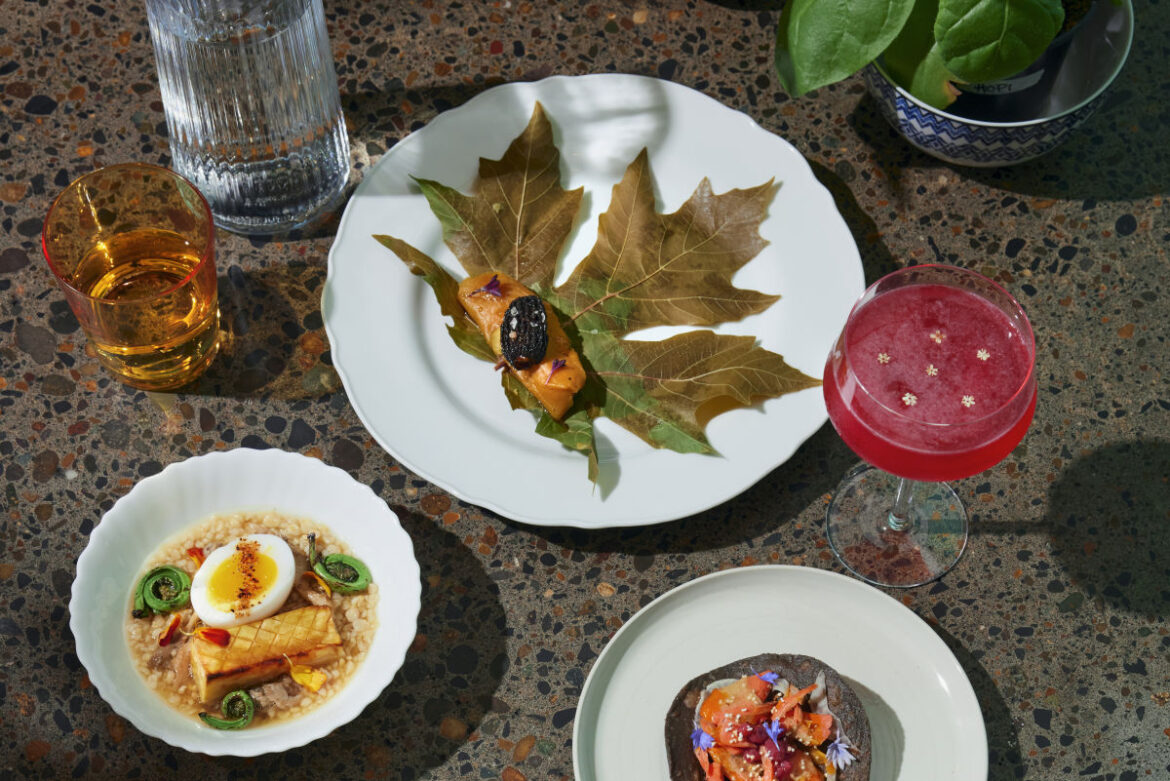
Dining and Cooking